The symbolism of the snake or serpent is one of the most widespread across mythology, folklore, and religion. And, not surprisingly, snake dreams are some of the most common dreams.
The snake has many names and attributes: Master of the mystery of rebirth. Bringer of light and healing. Bearer of the fruit of immortality. Its celestial sign is the Moon, which shares similar characteristics, something we’ll cover later in the article.
The image of two snakes intertwined or copulating is associated with fertility and regeneration. A serpent coiled around a staff or tree is a symbol of healing, an image which carries on to this day as an icon for the field of Medicine.
Mythologically speaking, the snake represents the primal life energy which rises out of the primordial waters of being - that earth-bound, spiritual energy which is incarnate in us all. In a human being that energy has the potential to become the highest spiritual principle. We see this aspect of serpent symbolism in the images of Kundalini yoga.
Table of Contents - Jump to Section
Serpent Symbolism: Instinct and Unconsciousness
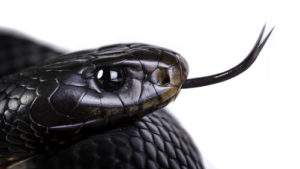
Now, serpent and snake energy is not always so light and optimistic. The symbolism of snake and serpent can also represent a darker, unconscious energy. For example, we talk about the reptilian part of the human brain. Our reptilian brain includes all of the same structures as those in the brain of reptiles. It’s that really old part of our nervous system that regulates our body’s vital functions, such as breathing, heart rate, and body temperature. In addition to that, the reptilian brain also controls our most basic drives, sometimes called the Four Fs of Evolution: fighting, fleeing, feeding, and – uh hum - fucking.
…the serpent, the rejected one, is the representative of that unconscious deep (“so deep that the bottom cannot be seen”) wherein are hoarded all of the rejected, unadmitted, unrecognized, unknown, or undeveloped factors, laws, and elements of existence.Joseph Campbell, Hero with a Thousand Faces
In this so-called lower capacity, the serpent or snake is the ruler of that dark netherworld of instinct, the age-old, innate wisdom of the body, something from which most modern humans are tragically disconnected. In this aspect, the symbolism of the snake can represent parts of ourselves of which we are unconscious and to which we are completely unrelated. These rejected or forgotten parts of ourselves can include both positive and negative qualities.
And consequently, when you reject those “lowest of mental functions” - and thereby deny your instinctive life - then in dreams, the serpent may strike or chase you, crawl inside your mouth, or appear in some other aggressive form.
The Dual Nature of Snake Symbolism
So, you can see that snake and serpent symbolism represents both the highest and the lowest energies of life. How the symbolism of the snake and serpent appears in our dreams depends on our life circumstances and our conscious attitude at the time of the dream
Let’s start with a general list of associations with snake and serpent symbolism. Then we’ll expand on that so you can get a better understanding of just how deep this paradoxical symbol goes. You’re going to notice some apparent contradictions, but all of it should make more sense at the end of this article. Keep in mind that any of these qualities can appear in either a helpful or adversarial form.
-
regeneration
-
rebirth out of death
-
renewal of life
-
Emergent life energy
-
duality
-
eternal life
-
lunar wisdom
-
transcendence
-
Instinctual Wisdom
-
healing
-
fertility
-
unconsciousness
Serpent and Snake Symbolism
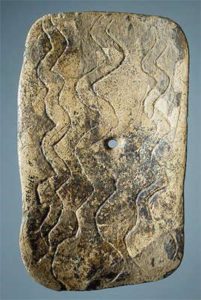
If you have looked at both the list and slider imagery associated with the symbolism of the snake, you may be asking how all of these images interconnect. How on earth is the serpent symbol related to the moon, a bird, a spiral, or the tree and its fruit of immortality?
All of these associations are based on the various forms and images in which snake and serpent symbolism have appeared throughout the history of humankind. And the history of serpent and snake symbolism goes way back, at least 25,000 years – and with the discovery of the Python Cave in Botswana, possibly even longer.
One of the first examples we have are three serpent symbols carved on a mammoth ivory buckle, which archeologists excavated in Mal’ta (Siberia) from the grave of a child about 4 years old. It’s from around 22,000 BCE. We will look at it again below, but here’s a preview.
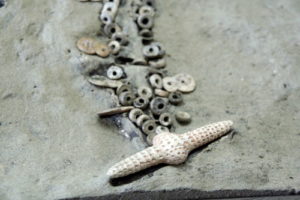
Attributes of the Snake and Serpent
On the back of this buckle, someone carved a spiral wound seven times around. In addition to an ivory crown, the child was also wearing a necklace with a bird-shaped pendant. The important thing to keep in mind about this scenario is that it’s a grave containing what we can only assume to be sacred objects.
Imagine the people who did this over 25,000 years ago. What do you think they were thinking? How do you imagine they were feeling about this child’s death?
Whenever we find images grouped together like this – the serpent, the spiral, and the bird – we call it a symbolic constellation. Just as a constellation of stars forms an image, a constellation of symbols also forms a kind of image. And, for our purposes of symbolic amplification, it’s an image of meaning.
Understanding such symbolic constellations helps us to attribute richer associations to the symbols and images we see in our dreams.
Now back to this little child’s funeral and grave: All of these images together point to highly ceremonious burial. This is one of our first indications that the images of the serpent, spiral, and bird were revered as something sacred. Not only that, but these images are also related to a certain kind of attitude about Death, one that reaches as far back as 25,000 years.
Keep that in mind for now.
Deeper Meaning of Snake and Serpent Symbolism
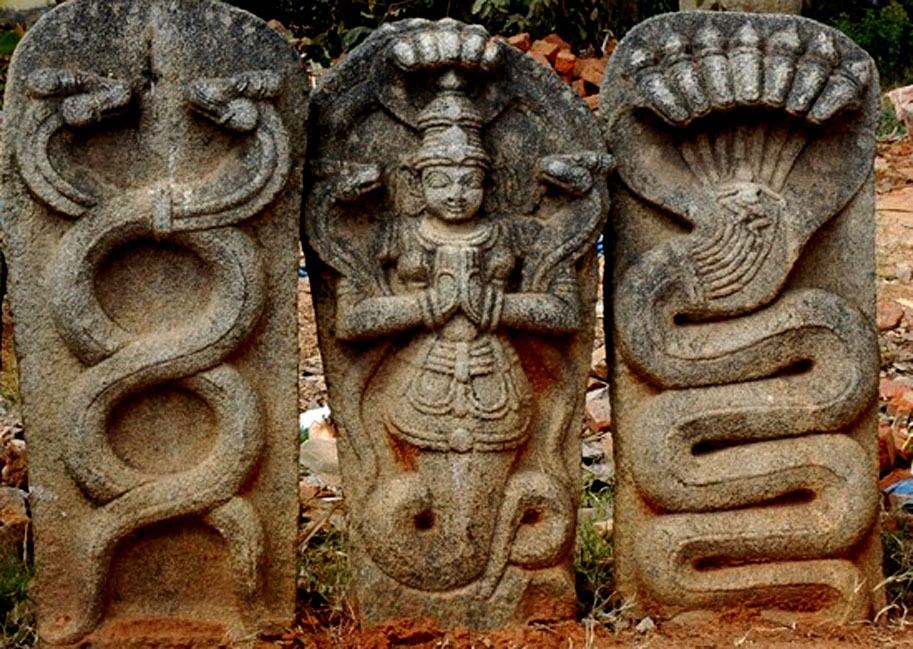 Symbolic understanding is only transformative when we go beyond the surface meaning of an image. In order to penetrate the deeper meaning of snake and serpent symbolism – or of any symbol – we have to go beyond a mere list of associations. By that I mean don’t just read something that says, “the snake means new life or fertility.” It essentially converts the symbol into a sign. A sign has no transformative power and it is reductive. There are plenty of other symbols that allude to new life or fertility, for example a sprouting plant or a child.
Symbolic understanding is only transformative when we go beyond the surface meaning of an image. In order to penetrate the deeper meaning of snake and serpent symbolism – or of any symbol – we have to go beyond a mere list of associations. By that I mean don’t just read something that says, “the snake means new life or fertility.” It essentially converts the symbol into a sign. A sign has no transformative power and it is reductive. There are plenty of other symbols that allude to new life or fertility, for example a sprouting plant or a child.
You have to ask why the snake image and why now?
Furthermore, reductive dream interpretations get you nowhere in understanding your dream meanings. For the dreamer it just strikes a flat note in terms of meaning. It’s like reading a generic daily horoscope and expecting to have some kind of revelation about it.
Real dream meaning resonates within you. It is not about intellectual understanding or mental gratification. The real dream meaning is something that strikes a chord of understanding that you can literally feel. It is an aha! moment. That’s when you know you’ve got it.
Once you have an idea of a symbol’s meaning, some questions for your dream interpretation are:
What does this signal for my life right now?
How can I integrate this information into my life?
You don’t always get an immediate answer, but you can at least be open to that answer when it does strike you. And strike you it will! Marie Louise-von Franz used to say, “if you wake up from a dream and think, ‘I’ve got it!’,” then you have probably missed it.
The Snake Symbol: A divine being in his own right
For many Western or Western-oriented people, their first religious association with serpent symbolism is that of the Old Testament and the Serpent in the Garden. What many people don’t know, however, is that long before the Serpent was known as the deceiver in the Garden, he was a highly revered god in his own right.
Wait. What?? What do you mean, “a god”?
This is what I am imagining some of you screaming at the moment. Listen, I grew up in Southern U.S., under the tyranny of fire and brimstone Christianity. I know what kind of blasphemy this is to some people. For twenty-two years of my life, I believed that I was hell-bound because, no matter how hard I tried, I could not love the image of God that I’d grown up with. I only feared him.
… and [He] will throw them into the furnace of fire; in that place there will be weeping and gnashing of teeth…They will be punished with everlasting destruction and shut out from the presence of the Lord and from the glory of his might…Mathew 13:42 & Thessalonians 1:9
Now, even as a young child, I was smart enough to know that if I didn’t love God in my heart and soul, and thus only obeyed him out of fear, that I was doomed. Every night, I prayed for revelation, understanding, or at the very least, the unbridled faith I could see all around me. Nothing happened.
I was never baptized because it felt too hypocritical. There was no love. Only fear. So, in my mind, I was damned.
Thankfully, several deeply spiritual encounters finally broke the spell which that religion had over me.
And now back to the idea of the serpent god.
Symbolism of the snake and primitive images of god
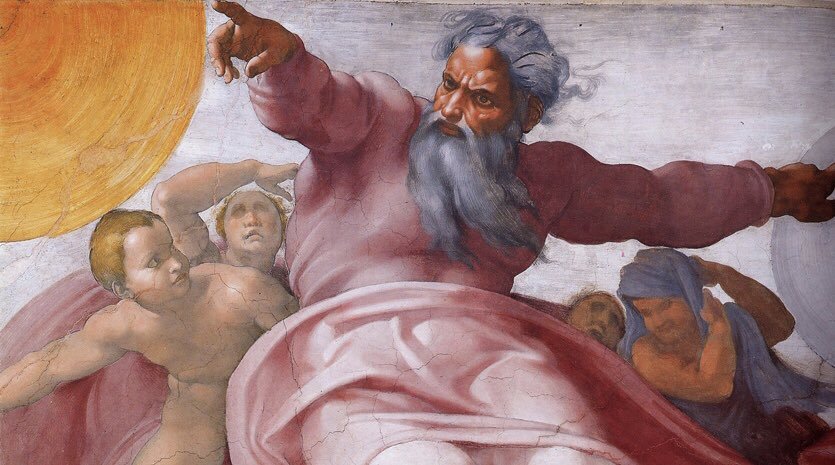
Now we have to be careful when we speak of the religious beliefs of so-called primitive people. When I say the serpent was a god in his own right, I don’t mean that people thought god was an actual serpent --- not in the way that many Christians or Muslims believe their god is a fact. By that, I mean many Christians and Muslims believe that God is an actual father-like personality in heaven.
Humans have always had some concept of god, but the concept refers to an ultimate mystery, to something ineffable. To restrict god to something concrete limits it to the meager concepts of the human mind.
The idea of God refers to a symbolic fact, not to an actual fact, and this is the problem of religion today. People believe in religious facts: Jesus was born of an actual virgin. Christ actually died and was resurrected bodily into a place called Heaven. Jerusalem or Mecca is the Holy Land.
"Neither shall they say, Lo here! or, lo there! for, behold, the kingdom of God is within you."Luke 17:21, King James Bible
 All of these are symbolic references that point to a dimension within you. You must die and be born again, within yourself. That is the meaning of the Virgin Birth. The kingdom of heaven is within you. Symbols are references to the spiritual dimension of the human being and not to strange metaphysical facts.
All of these are symbolic references that point to a dimension within you. You must die and be born again, within yourself. That is the meaning of the Virgin Birth. The kingdom of heaven is within you. Symbols are references to the spiritual dimension of the human being and not to strange metaphysical facts.
To identify with a religious fact is to completely miss the mystery of symbolism. God as a symbol points to the ultimate, ineffable mystery of Being. The serpent symbol has always been a reference to that ultimate mystery.
Serpent Symbolism and Symbolic Energy
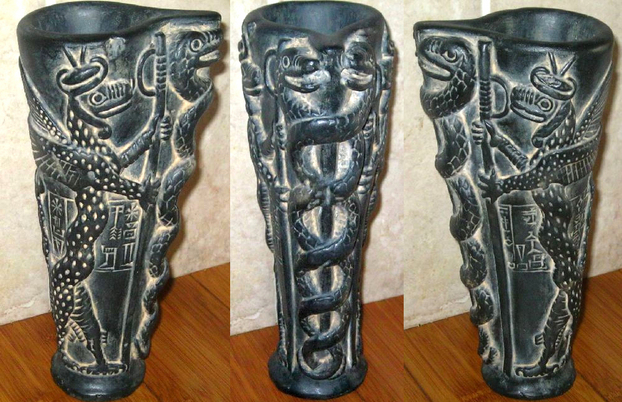 So, to repeat, it was never the actual body of the snake that was held sacred. Rather, it was the energy exuded by the snake that was held sacred. Early humans didn’t have anything like biology to explain the snake. They were simply fascinated by the energy of creature itself.
So, to repeat, it was never the actual body of the snake that was held sacred. Rather, it was the energy exuded by the snake that was held sacred. Early humans didn’t have anything like biology to explain the snake. They were simply fascinated by the energy of creature itself.
The amazing ability of the serpent to shed its skin, and thus renew its youth is a symbol for life throwing off the old, rising anew, and continuing to live. It is this ability to renew itself that lends it the epithet Master of the Mystery of Rebirth.
Serpent Symbolism and the Renewal of Life

There are two ways of looking at this kind of serpent symbolism. One is that the snake symbolizes our own power to throw off our past and become renewed.
And the second, the cosmic level of serpent symbolism is the awareness of power of Life to throw off the death and become renewed. Birth, death, and rebirth. This is the natural cycle of the life energy. The is the idea behind the myth of eternal return.
We see it in everything around us: the daily and yearly round of the sun, the waning and waxing of the moon, the change of seasons.
This same power is what connects the symbolism of the snake to the Moon, which also sheds its shadow to become reborn again each month. The moon and its phases are associated with the life-creating, menstrual cycles of the womb, as well as the cycles of time itself.
These people of the earth saw fertility, death, and regeneration in everything around them. All powers of Nature including plant life were worshipped. A plant withered, died, and rotted away – and then – pushed its way through the soil to come to life again. This whole round of birth, death, and regeneration was the source of life for these people.
If you think that’s strange, then you should reflect on why we still bury people in the ground. Where do you think that comes from?
Serpent Symbolism and Reverence for Nature
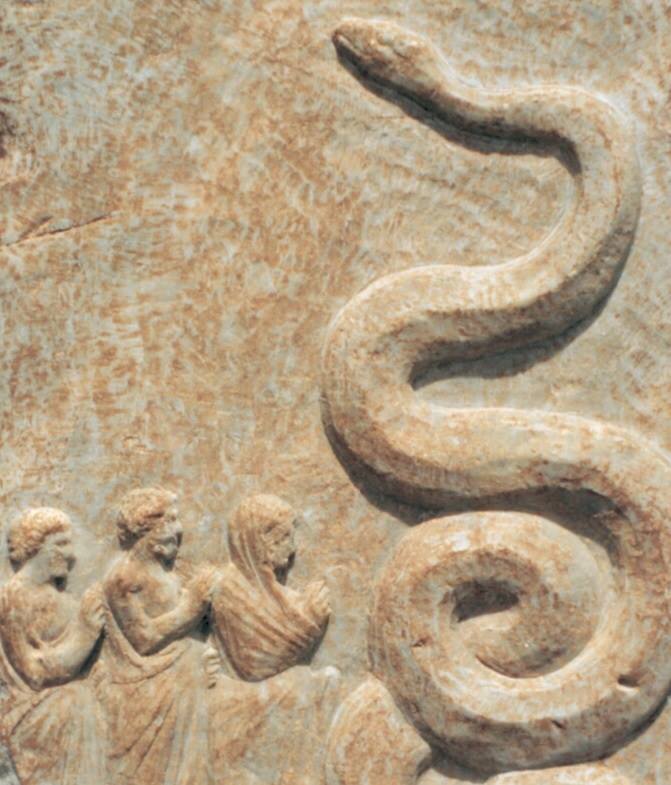 Here is another image from a Serpent temple. Once again, we call the serpent sacred or divine when archaeologists find its imagery and sculpture in temples or grave sites. Look at this early Greek temple image to the left depicting people holding their hands in a prayer gesture to a larger than life snake. It shows absolute reverence for the mysterious power of Nature and of Life itself.
Here is another image from a Serpent temple. Once again, we call the serpent sacred or divine when archaeologists find its imagery and sculpture in temples or grave sites. Look at this early Greek temple image to the left depicting people holding their hands in a prayer gesture to a larger than life snake. It shows absolute reverence for the mysterious power of Nature and of Life itself.
If, however, you find imagery like this sacrilegious, you are not going to get very far with symbolic understanding or dream interpretation. I’m sorry to say that it is your own loss. You have to learn a new way of seeing this imagery. Doing so does not negate or defile your religion.
Really Early Snake Symbolism

Now, let’s get back to that buckle made of mammoth bone from 22,000 BCE. Remember, archaeologists found it in a child’s grave. As you can see, on one side are three cobra-like serpents. The diamond-shaped head is at the bottom.
On the back of it, we see another related symbol: a main spiral with seven turns. Let me repeat, what makes this particular artifact interesting is that it was found in the grave of a child. That tells us something about what the serpent and spiral symbols meant.
Snake Symbolism and Life After Death
The child in that grave was buried on an east-west gradient with his little face pointing eastward. This east-west gradient is important and you’ll see it often if you study comparative religion and mythology. The sun sets in the west and rises in the east. Because of this, the east is known as the direction of rebirth.
So, from 25,000 years ago we see the first signs that point to the snake’s connection to rebirth and “life after death”.
The spiral and its related image, the labyrinth, is also a symbol of the power of Life to continue after death. We know this from mythological and other religious sources. I will cover that in another article.
In this one little grave, then, we have several prominent symbols of the idea of rebirth and regeneration: the direction the child faces, the positioning along east-west gradient, the labyrinth, the bird, and the snakes.
We’ll explore this theme many times on this site. For now, remember what I said earlier about the symbolism of the snake and its association with rebirth. Because the snake can shed its skin and thus renew itself, he knows the secret of throwing off death to become born again.
However, his real secret is the mystery of throwing off death and becoming born again before you die. This is a very different kind of resurrection. More on that later…
For now, let’s look at some later forms in which the symbolism of the snake and serpent and some of their associated images appear.
Later images of snake symbolism
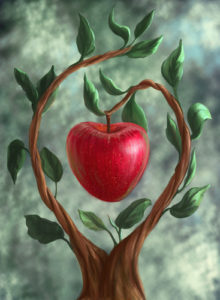
Here are the connections we’re making: the symbolism of the serpent or snake, the garden and tree with its fruit, and briefly, the moon.
I said that the moon was the celestial sign of the snake. Like the snake, the moon is associated with being able to shed its shadow, and thus also be born again. So, the moon is also part of this secret knowledge of throwing off death and coming back to life. You’ll hear me speak a lot about Lunar Wisdom throughout the site.
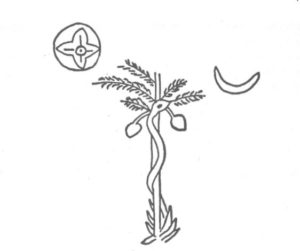
The fruit of the serpent is especially important. In the West, we know of two fruits, both of which are forbidden to humans: the forbidden fruit with which the serpent tempted Eve and forbidden fruit that is guarded by the two cherubim at the Tree of Life.
Let’s revisit that familiar image from the Book of Genesis.
Snake Symbolism: the Serpent in the Garden of Eden
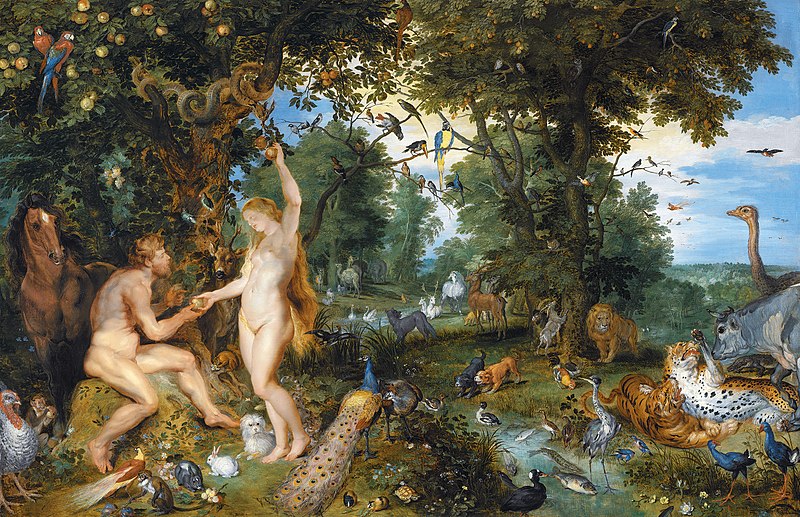
Here we have the idyllic Garden of Eden. There were two trees in the garden, the Tree of Knowledge and the Tree of Life. The God of the Bible had one rule:
You may freely eat from every tree of the garden, but you are not to eat from the tree of the knowledge of good and evil, because you will certainly die during the day that you eat from it.Book of Genesis, New International Standard Version
If you grew up in a Westernized, Biblical culture, then you are certainly familiar with the image of the Garden and the Tree. Here’s the text from the International Standard Version of the Bible.
Now the Shining One was cleverer than any animal of the field that the Lord God had made. He asked the woman, “Did God actually say, ‘You are not to eat from any tree of the garden’?”“We may eat from the trees of the garden,” the woman answered the Shining One, “but as for the fruit of the tree that is in the middle of the garden, God has said, ‘You are not to eat from it, nor are you to touch it, or you will die.’”
“You certainly will not die!” the Shining One told the woman. Even God knows that on the day you eat from it, your eyes will be opened and you’ll become like God, knowing good and evil.”Book of Genesis, New International Standard Version
Fall from Grace
Well, I’m fairly certain we know what happened next. After God realized what Adam and Eve had done, he rallied his angels,
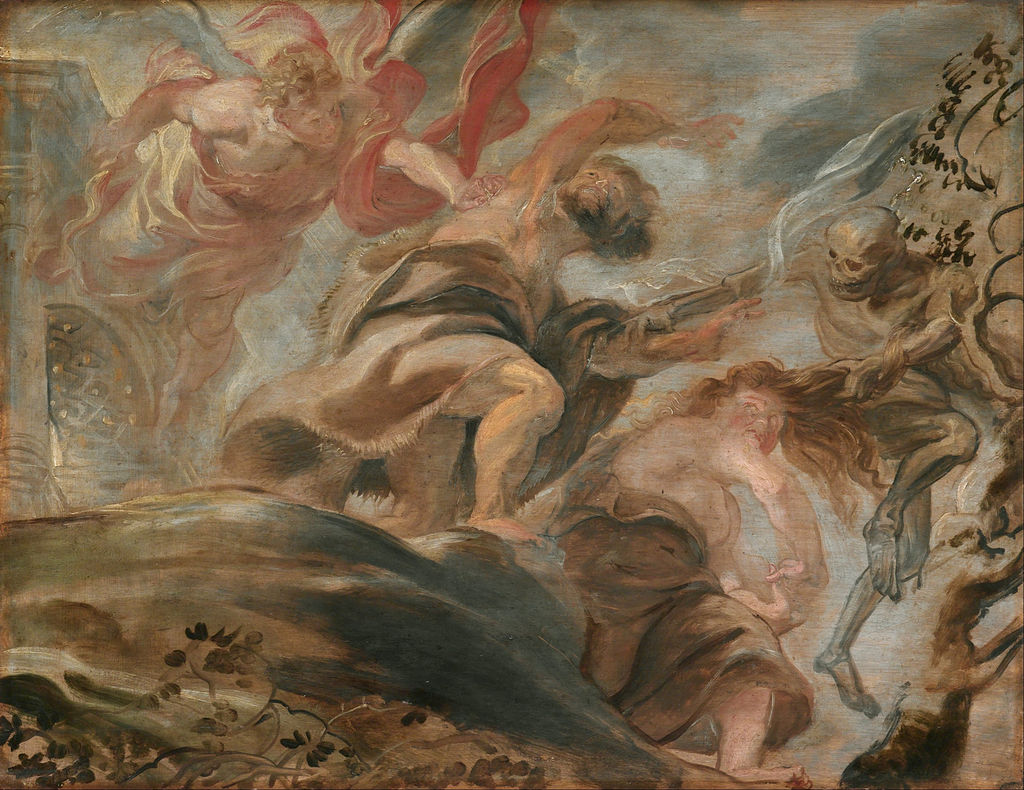
And the Lord God said, “The man has now become like one of us, knowing good and evil. He must not be allowed to reach out his hand and take also from the tree of life and eat, and live forever.”So the Lord God banished him from the Garden of Eden to work the ground from which he had been taken. After he drove the man out, he placed on the east side of the Garden of Eden cherubim and a flaming sword flashing back and forth to guard the way to the tree of life.Book of Genesis, New International Standard Version
Here again, we have a serpent, the eastward direction connected to immortality, the fruit, and the tree. And again, here is the mystery of rebirth and renewal in association not only with the symbolism of the snake and serpent, but also with the Tree of Life and its precious fruit. Whoever eats of that fruit will live forever.
I’ve always wondered why so few people question this strange notion of original sin or its related idea of disobedience. Why can’t we eat that fruit? To whom was God speaking when he said, “like us”? And who or what was this Shining One who speaks to Eve and tells her that she will surely live if she takes a bite from the apple?
Serpent Symbolism: Early Christian Serpents
There’s a Gnostic text called the Testimony of the Truth that retells the story of Genesis from the Serpent’s point view. Here’s what it says about the familiar scene in the Garden:
It is written in the Law concerning this, when God gave a command to Adam, "From every tree you may eat, but from the tree which is in the midst of Paradise do not eat, for on the day that you eat from it, you will surely die." But the serpent was wiser than all the animals that were in Paradise, and he persuaded Eve, saying, "On the day when you eat from the tree which is in the midst of Paradise, the eyes of your mind will be opened."But what sort is this God? First, he maliciously refused Adam from eating of the tree of knowledge, and, secondly, he said "Adam, where are you?" God does not have foreknowledge? Would he not know from the beginning? And afterwards, he said, "Let us cast him out of this place, lest he eat of the tree of life and live forever." Surely, he has shown himself to be a malicious grudger! And what kind of God is this? For great is the blindness of those who read, and they did not know him.Gnostic Text, Testimony of Truth
Forbidden Teachings
You should be aware that prior to the Counsel of Nicea in 325, Gnostic texts like the one quoted above were part of early Christian teaching. At the Counsel of Nicea, the founding fathers of the newly established official church condemned them as heretical.
Again, keep this in mind. I'll come back to these Gnostic texts again later.
Did you know that in every other non-Western Garden mythology, the fruit of the Tree of Immortal Life is freely given to anyone whose mind and heart are ready to receive it? There’s no jealous god keeping anyone from it. Neither is there any shame, and, certainly, no punishment for eating the sacred fruit.
However, the image in the Biblical version presents a very different mood, and, thus, carries a different message than the original symbolism of the serpent and tree.
Early Garden Serpents
Symbolism of the Snake and Serpent: Sumerian and Babylonian Seals
Now, I am by no means a specialist in early cylinder seals. Joseph Campbell, the famous scholar of comparative mythology and religion, brought my attention to these seals. I used his two original sources for further study: Ward's The Seal Cylinders of Western Asia and Langdon's Semitic Mythology.
Through a comparative study of similar serpent and garden imagery, we can arrive at some level of symbolic understanding.
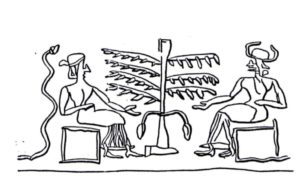
Snake symbolism in early Sumerian cylinder seal (2500 BC)
The first image is from an early Sumerian cylinder seal. Here we see a version of the tree in the garden – a mythic date palm with two fruits hanging from it: the fruit of knowledge and the fruit of immortality.
Seated on either side are two deities. Notice the crescent-moon bull horns on the male figure. We know from his horned “lunar crown” that he is a representation of the “ever-dying”, “ever-resurrected” god, such as Damuzi, Osiris, and Adonis to name a few. Dare I add Jesus to that list?
 We’ll look more closely at the bull and the moon in another article, but for now, remember that the moon is another symbol of death and resurrection. The moon dies and is three days dark before it resurrects. Christ is three days in the tomb before he resurrects.
We’ll look more closely at the bull and the moon in another article, but for now, remember that the moon is another symbol of death and resurrection. The moon dies and is three days dark before it resurrects. Christ is three days in the tomb before he resurrects.
Did you ever notice that Easter always falls near the date of the full moon?
Our serpent stands behind the female figure. You’ll see a lot of online commentary about this particular image associating it with an early notion of the “temptation of Adam and Eve”. There’s a mound of evidence against this idea. I’m not sure why hardly anyone reads the rest of the evidence, but it’s out there. Joseph Campbell compiled and presented a lot of it in Masks of God, Occidental Mythology.
Note that these are images of deities and not regular human beings. In other words, there is no temptation or fall from grace.
Babylonian Gardens
There is other supporting evidence against the temptation theory from another seal. The seal below is from Babylon (1750-1550 B.C.) In the image here, we see similar symbols in the palm tree, the date fruit, and the crescent moon. The two figures by the tree are the deities who guard the tree of life – similar to the Cherubim in Genesis.
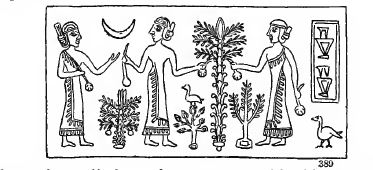
The woman coming in from the left is an initiate, who, under the crescent moon, holds out her hand to receive the fruit of knowledge and immortal life. As a note, the Book of Genesis separates the one tree into two.
Notice the goddess offers the fruit of the tree to the initiate. There is no notion of temptation or threat if she dares to take that fruit.
What's being offered to the initiate is the wisdom of the fruit, which is the same wisdom of the moon, and the very same wisdom of the serpent.
And that wisdom is the mystery of rebirth.
Serpent and Snake Symbolism Ancient Greece
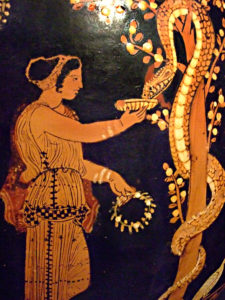 The images from ancient Sumer and Babylon are only two of many earlier garden serpents associated with a sacred tree and its precious fruit. Here's another one from a Greek vase: the Hesperides who guard the tree of golden apples.
The images from ancient Sumer and Babylon are only two of many earlier garden serpents associated with a sacred tree and its precious fruit. Here's another one from a Greek vase: the Hesperides who guard the tree of golden apples.
Gold is yet another symbol for that which is immortal or everlasting. The woman is holding a wreath or a crown and she lovingly feeds the serpent in the tree.
Below, to the right, an image I copied from Lady Jane Harrison's book Themis, published in 1912. Unfortunately, she herself could not remember the source of the image, but at least it gives us another great scene for our reflections on the symbolism of the snake. Here we have the tree with a great snake wrapped around it.
At the bottom of the tree, a spring wells out from a cave. Again, the snake represents the energy of life rising out of the primordial waters of being. He knows the secrets of life and the underworld and thus has the power to offer the fruit of that wisdom.
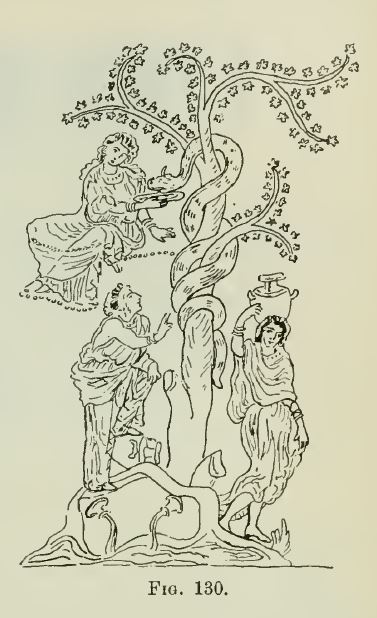 An old alchemical text, the Turba, says of the fruit bearing Tree,
An old alchemical text, the Turba, says of the fruit bearing Tree,
"Its fruits are of a special kind. The “Visio Arislei” speaks of “this most precious tree, of whose fruit he who eats shall never hunger.”“I say that that old man does not cease to eat of the fruits of that tree . . . until that old man becomes a youth.”C.G. Jung vol 13, par 403
Biblical Comparison
You might recognize here something very similar to what we see in the Bible.
… but whoever drinks the water I give them will never thirst. Indeed, the water I give them will become in them a spring of water welling up to eternal life.”John 4:14 New International Version (NIV)
Then Jesus declared, “I am the bread of life. Whoever comes to me will never go hungry, and whoever believes in me will never be thirsty.John 6:35 New International Version (NIV)
Just as Moses lifted up the serpent in the wilderness, so must the Son of Man be lifted up, so that everyone who believes in him would have eternal life.John 3:15 New International Version (NIV)
I could continue to show you examples of serpents, trees, and fruit from other mythologies. All of them present the symbolism of the snake and serpent and the fruit of the Tree in a totally different light.
I’ll return one more time to this idea of the serpent, the tree, and eternal life, but first let’s look at the serpent as a healer.
The Serpent Healer
Asclepius and the healing serpent
You probably recognize the rod of Asclepius as the emblem for the field of medicine. Asclepius was the ancient Greek god of medicine. Not only could he cure dying people, but on a few occasions, he even resurrected the dead by using a magical herb given to him by a snake in a tomb.
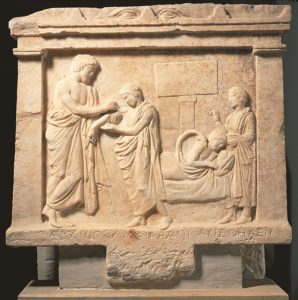 Healing temples called Asklepieion were all over Greece, but the one at Epidaurus was the most famous. Some of these temples had labyrinthine basements with running streams and sacrificial altars.
Healing temples called Asklepieion were all over Greece, but the one at Epidaurus was the most famous. Some of these temples had labyrinthine basements with running streams and sacrificial altars.
The whole environment of these temples was similar to a modern health spa. The patient was removed from harmful environments or toxic situations and brought into the temple to rest and recuperate.
The preferred curing method of these temples was incubation, a ritualistic dream curing, pictured here to the left.
In the background is the invalid, dreaming, and at the right his own vision of himself standing, as though having just emerged in spirit from his ailing body. At the left this figure has advanced to be cured by the god, who is touching his ailing shoulder, while on the couch, simultaneously, the same shoulder is being licked by a snake, which ( if I read the picture correctly) has emerged from the dreamer himself.Joseph Campbell, The Mythic Image
Moses and the healing serpent
The Lord said to Moses, “Make a snake and put it up on a pole; anyone who is bitten can look at it and live.” So Moses made a bronze snake and put it up on a pole. Then when anyone was bitten by a snake and looked at the bronze snake, they lived..Numbers 21:8
No matter how hard the authors from the 3rd to 9th centuries BCE of the Bible may have tried to revise and distort the original message of the Garden, there is still a profuse amount of imagery and undertone throughout the Bible that still illuminate the healing aspect of the serpent. The above quote from Numbers is just one of many examples. And the pole, by the way, is yet another image related to the Tree.
Awakening of Consciousness: Biting the Forbidden Fruit
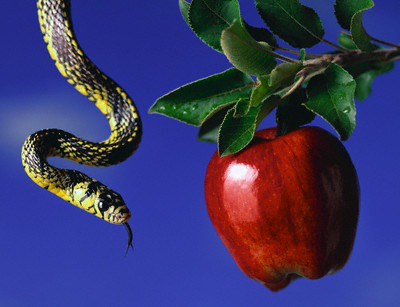 Despite his evil rendering, the serpent of the Bible kept a few of his qualities from the older days. He is still hanging around the Tree in the Garden, and he still knows the secret knowledge behind both trees. And, most importantly, he shares that knowledge readily with those who are willing to receive it.
Despite his evil rendering, the serpent of the Bible kept a few of his qualities from the older days. He is still hanging around the Tree in the Garden, and he still knows the secret knowledge behind both trees. And, most importantly, he shares that knowledge readily with those who are willing to receive it.
What’s being offered to the initiate is the wisdom of the fruit of the Tree, which is the same as wisdom of the moon, and the very same wisdom of the serpent. And that wisdom is knowledge life, death, and the possibility of rebirth.
Snake Symbolism: the old Serpent Guru
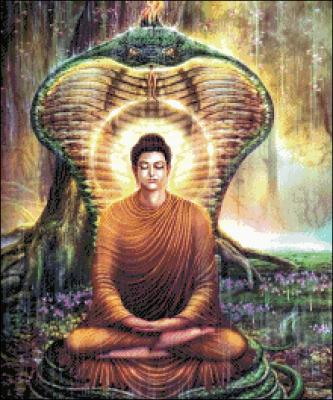 As I have been saying all along, before the god of the Bible walked in the cool breezes of Eden, the serpent had already long been a god in his own right. And, judging from evidence such as that little 25,0000-year-old buckle, maybe even the first one.
As I have been saying all along, before the god of the Bible walked in the cool breezes of Eden, the serpent had already long been a god in his own right. And, judging from evidence such as that little 25,0000-year-old buckle, maybe even the first one.
The Bible never actually says “and God created the serpent”. It says, the serpent was “cleverer than any animal of the field that the Lord God had made”. And for that matter, no other animal speaks.
And to say it yet again, in all other garden mythologies the serpent was a divine messenger and healing principle.
What we have in the Bible is a complete inversion and distortion of the original meaning and message of the symbolism of the snake and tree in the garden.
And what is that original message?
Take a bite from this Tree and your eye will be opened. You will live. And if you also take a bite from that other tree, you will know eternal life. To put it in the words of the Biblical God himself, to take a bite from the other tree would mean to “live forever”.
Patriarchal Inversion
Now there is a long history of how this distinctly patriarchal inversion of meaning transpired. We should note that it has nothing to do with any sort of divine revelation from a God that only showed up about 621 B.C. with the reign of King Josiah of Judah.
The inversion of meaning was and is about power over the old Nature religions. To get into that here would be beyond the scope of this article. If you are interested in how it happened, I highly suggest reading Occidental Mythology by Joseph Campbell.
Serpent Symbolism: The Shining One
In the above passage from the Genesis scene at the Garden, I chose the International Standard Version of the Bible specifically because it calls the Serpent, the Shining One. We can associate this epithet with the name Lucifer. The word Lucifer is a Latin word that means “light-bringing”. The word lucifer was originally associated with both the light of the morning star and moonlight. I’ll get to the significance of that dual meaning in just a moment.
Allow me to digress just a bit here. In Sanskrit, the ancient spiritual language of India, there is a word: guru. Guru loosely translates into dispeller of darkness. The darkness is a reference to a person’s ignorance of his or her true nature.
Serpent and Snake Symbolism: Bringer of Light and Wisdom
Consciousness
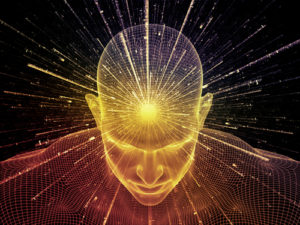 Before I go further into the symbolism of the snake and serpent, I want to talk about what it means to be a conscious being. People seem to take consciousness too much for granted. Rarely does anyone even consider what a miraculous development consciousness was for Life. And even more miraculous is that we humans are its vessel.
Before I go further into the symbolism of the snake and serpent, I want to talk about what it means to be a conscious being. People seem to take consciousness too much for granted. Rarely does anyone even consider what a miraculous development consciousness was for Life. And even more miraculous is that we humans are its vessel.
By consciousness, I mean, “the means through which we know that we know”. It is this function of knowing that we know that differentiates us humans from other animals.
I believe that, after thousands and millions of years, someone had to realize that this wonderful world of mountains and oceans, suns and moons, galaxies and nebulae, plants and animals, exists.Carl Jung, Collected Works, vol 9iSymbolically speaking, light is equated with consciousness, and darkness with unconsciousness.
But what is this thing we call consciousness? How did it emerge and why is it so important that we have attained it?
Consciousness is the awareness, not only of one’s own sense of being, but also of one’s being in this world. And the world only comes into being when man notices it. We humans are that someone.
Individual Awakening
Human consciousness emerges on two dimensions. One is the individual dimension and the other is at the cosmic dimension. An individual’s awakening is a personal experience. The mythological event symbolizes human awakening at the cosmic level.
I remember a profound experience that I had as a child. I was in the third grade. One Friday at the end of the day, our teacher had just corralled us into a line because the bell was about to ring. Excited and daydreaming about spending the weekend with my father, I was in a trancelike state.
The world around me turned a bit gray and muted. It was as if I was watching everything around me from another dimension. All of a sudden I had a revelation: “I am me and no one else is… I’m Me.” This little mantra, I kept repeating to myself. It was then that the world around me looked very different; everything was animated and pulsating with life. It was as if I saw everything for the first time. I realized that somehow I could affect the world by interacting with it from that space of awareness. I remember thinking to myself that other people did not know this.
Somehow, I realized that no one could penetrate that space – it was mine and mine alone. I felt astonishingly empowered by this experience. This awareness was my secret and I spoke to no one about it. A wave of pure joy washed over me and I felt as if I had an invisible weapon. Before that moment, though I did not know it consciously, I had felt horribly insignificant. None of that mattered anymore because I was myself and no one else was. I was individual.
This is what is meant by awakening.
The Mythological Awakening

The world comes into being when man discovers it.Carl Jung, Collected Works vol 6 par 652
When we speak of awakening at the mythological level, we are talking about cosmic evolution. At one point in time, we were not so different from other animals. We too lived instinctually, totally merged with our surrounding environment.
But then something happened that must have been similar to what I described about my own awakening. Human beings became aware of both the world around them and of their own individuality. Carl Jung gives an amazing account of what that may have been like for the earliest humans.
From a low hill in the Athi plains of East Africa I once watched the vast herds of wild animals grazing in soundless stillness, as they had done from time immemorial, touched only by the breath of a primeval world. I felt then as if I were the first man, the first creature, to know that all this is. The entire world round me was still in its primeval state; it did not know that it was. And then, in that one moment in which I came to know, the world sprang into being; without that moment it would never have been. C.G. Jung, Collected Works of C.G. Jung, Volume 9i par 177
Beyond Other Animals: the significance of the awakening of consciousness
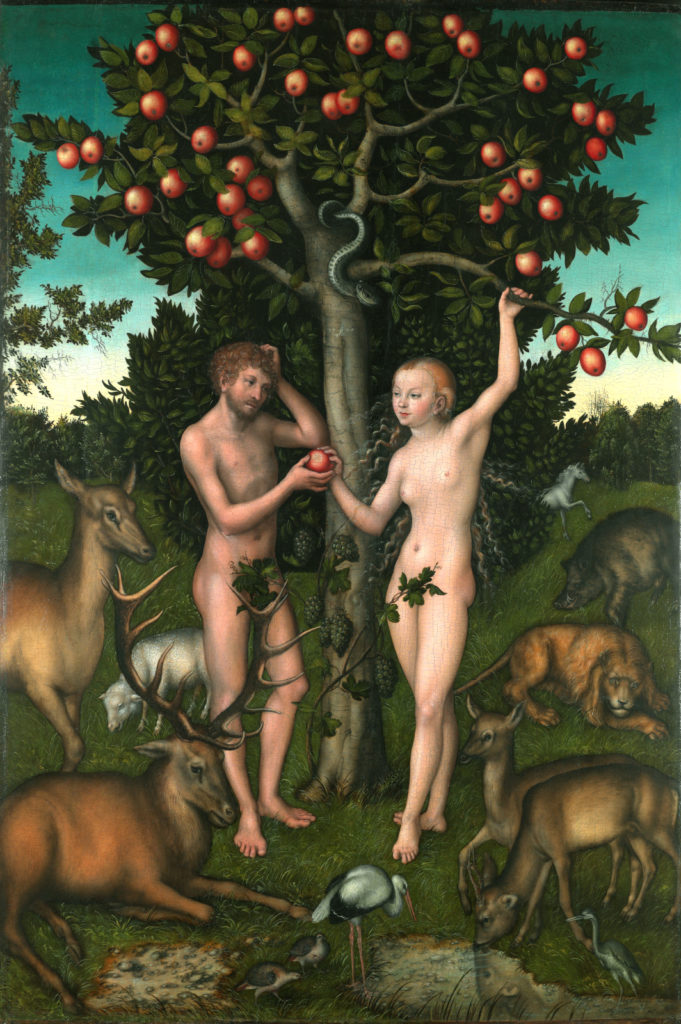 As human beings woke up to the world around them, they were essentially stepping out of the purely instinctually-driven animal world. This awakening was likely an evolutionary process, but when it’s described through mythology, it’s imaged as an event.
As human beings woke up to the world around them, they were essentially stepping out of the purely instinctually-driven animal world. This awakening was likely an evolutionary process, but when it’s described through mythology, it’s imaged as an event.
This awakening to the world around them is the meaning of Adam and Eve realizing their nakedness and the knowledge of good and evil. It is the realization of our participation in life in the field of time.
Prior to this awakening, humans lived in a sort of mythological dream time realm.
The bit about being ashamed is a Biblical insertion and it simply does not fit the typical scene of the Serpent gardens.
Once awakened, we humans could see the world around us and know that it was. And while that’s a fantastic thing, it also brings with it, some pretty dramatic – if not traumatic – realizations.
 The most fundamental of those realizations is everything must die. The knowledge of our impending death, for anyone who dares to really consider it, can be frightening. This brings us back to the original warning of Genesis: when you bite into the fruit of knowledge, surely you will die.
The most fundamental of those realizations is everything must die. The knowledge of our impending death, for anyone who dares to really consider it, can be frightening. This brings us back to the original warning of Genesis: when you bite into the fruit of knowledge, surely you will die.
This is not a reference to anything like original sin or punishment. It’s a mythological reference to the birth of human consciousness and, with that, the realization of death.
Serpent Symbolism and the fruit of eternal life
The Symbolic Meaning of Rebirth
I have said that there are two ways of understanding the symbolism of rebirth. One is psychological rebirth, the kind of rebirth related to those profound psychological transformations that we experience throughout the course of our lifetimes. These are fundamental experiences that can radically shift our attitudes and personalities. This is the meaning of “throwing off the past in order to become renewed.”
The other way of understanding rebirth is related to a realization that we are of the same spiritual energy as the serpent – that power of life which continues, even after our death.
Take for example a climbing vine that’s growing in your garden. If you plant it near a lattice it starts to climb along that framework, twisting and weaving its way throughout it. It knows exactly what to do. If you clip it back, new life sprouts out. Pull it out of the ground altogether and something entirely new springs up in its place.
This is the power of the life force. It will always return. Maybe not always in the same form, but nevertheless, it returns. We are of that same eternal life force.
"Just as man takes off his old clothes in order to put on new ones, so does the soul who lives in the body, by abandoning old form, enters into other forms prepared for it."Bhagavad Gita, 2:22
The Guardians
Now, let’s return to the Garden of Eden and the Tree of Life. Here again is the Biblical reference:
"And the Lord God said, “The man has now become like one of us, knowing good and evil. He must not be allowed to reach out his hand and take also from the tree of life and eat, and live forever.”So the Lord God banished him from the Garden of Eden to work the ground from which he had been taken. After he drove the man out, he placed on the east side of the Garden of Eden cherubim and a flaming sword flashing back and forth to guard the way to the tree of life."Book of Genesis (ISV) 3:22
The Tree of Eternal Life
I have some questions now for consideration. First, what does it mean that we should “live forever”? Second, just who are those two cherubim guarding the tree of life? And finally, what must one do in order to pass the threshold of those guardians?
You should know by now that the fruit of that tree is yours for the taking. Remember, it’s only in the later, patriarchal, mythic imagery that the fruit of the Tree is forbidden to us. In the Eastern traditions, especially in India, the mythic image of the eternal return still resonates in the hearts of the people. Their message is not one of “Repent, you’re a sinner!” Rather that message is, “Wake up, you are the eternal life force!”
The Eternal Dimension
Though it is accessible to everyone, the experience of that eternal ground is alien to many. To make it more complicated, many people have a fundamental misunderstanding of the concept of eternity. The mistake is in thinking of eternity as a measure of time, rather than experiencing eternity in the timeless now. Eternity has no beginning and no end. Neither is it some point in our heavenly or hellish future. Eternity is not about time. It is outside of time. It is timeless. Eternity is a transcendental constant that can only be experienced now.
Now is not a fixed point “in time,” but rather it is a timeless and novel moment-by-moment arising. It is the “still” point where the subsiding past and rising future intersect. We can see it vanishing as it appears, or, as T.S. Eliot poetically alluded:
Quick now, here, now always —Burnt Norton, T.S. Eliot
This arising and subsiding is an infinite “process,” though not really a process because it lacks the beginning and ending of an actual process. It just is. It is necessary for existence to be. It is the heartbeat of the universe itself - Birth, Death, Rebirth.
The Still Point of the Turning World
 The image you see here is a 4200-year-old steatite libation cup from the Mesopotamian King, Gudea. It is yet another image of an old Serpent god. His name is Ningizzida, Lord of Truth or sometimes Lord of the Good Tree.
The image you see here is a 4200-year-old steatite libation cup from the Mesopotamian King, Gudea. It is yet another image of an old Serpent god. His name is Ningizzida, Lord of Truth or sometimes Lord of the Good Tree.
Hopefully by now, you’re getting an idea of what this Truth or Tree is.
We have two copulating serpents, wound seven times around a staff. The staff – a caduceus - is associated with the god Hermes, god of mystical knowledge and guide of souls to eternal rebirth. The serpents appear through a pair of doors, opened by two lion birds, winged dragon-like creatures called Griffiths. Those Griffiths drawing open that pair of doors are the same as the Cherubim who stand at the Tree of Life.
Now recall the image of Moses and his serpent staff. Remember I said that the pole or staff was also associated with the Tree.
Serpent Symbolism: the Axis Mundi
The idea of this center pole is that of the axis mundi.
Such a pole or perch is symbolic of the pivotal point around which all things turn (the axis mundi), and so is a counterpart of the Buddhist Tree of Enlightenment in the "Immovable Spot" at the center of the world.Joseph Campbell, Occidental Mythology, pg 12
The axis mundi is the still point of turning world about which T.S. Eliot wrote in Burnt Norton.
"At the still point of the turning world. Neither flesh nor fleshless;
Neither from nor towards; at the still point, there the dance is,
But neither arrest nor movement. And do not call it fixity,
Where past and future are gathered. Neither movement from nor towards,
Neither ascent nor decline. Except for the point, the still point,
There would be no dance, and there is only the dance.”Burnt Norton, T.S. Eliot
That center point of the world is the same as the heavenly city of God. An eternal place that is no real place. It’s a reference to that eternal dimension - the center point - within your own being.
Transcending Opposites
The axis mundi, or center point, stands between the two serpents. The idea here is that it’s a point of reference which is beyond all opposites. Now remember, our whole notion of opposites came into being with the biting of that apple from the Tree of Knowledge of Good and Evil.
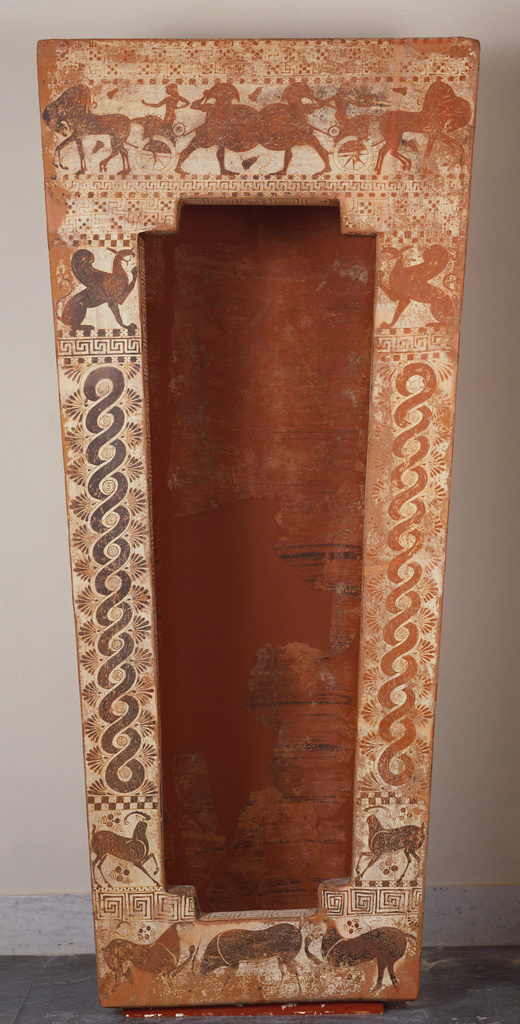 Born into a dualistic description of the world that most of us hardly question, we simply think and believe in terms of opposites: good and evil, right and wrong, pleasure and pain, should and should not and we project those perceptions on the world. We then struggle with the world around us, trying to make it fit into our perceptions of what we think should be and shutting out what we think should not be.
Born into a dualistic description of the world that most of us hardly question, we simply think and believe in terms of opposites: good and evil, right and wrong, pleasure and pain, should and should not and we project those perceptions on the world. We then struggle with the world around us, trying to make it fit into our perceptions of what we think should be and shutting out what we think should not be.
Beyond Duality
It is extremely difficult to consider ourselves as conditioned perceivers. And even more difficult, if not impossible, is it to see the blind spots within us created by our own conditioning. Unless we are willing to question everything, we will not see anything beyond those limited descriptions.
Those limited descriptions include those we have inherited from our religion.
In order to pass through that door and get to the Tree of Eternal Life, we have to transcend the bounds of dualistic thinking. That is our real salvation. This has always been the message of garden trees and serpents.
Wake up and realize your eternal nature! You can still read this in every sacred text of India.
Our lost traditions
You may be asking yourself why we here in the West don’t have such a message about our divine nature. And the answer is one that I have been alluding to all along. We do have it; only it’s been subverted.
Mystical revelatory scriptures were once a part of early Christian teachings, such as those from the Gnostic texts that I shared earlier. Now, here’s another text from the late Greek-Egyptian teachings of the Corpus Hermeticum:
Hermes Speaks
"If then you do not make yourself equal to God, you cannot apprehend God; for like is known by like. Leap clear of all that is corporeal, and make yourself grown to a like expanse with that greatness which is beyond all measure; rise above all time and become eternal; then you will apprehend God.
Think that for you too nothing is impossible; deem that you too are immortal, and that you are able to grasp all things in your thought, to know every craft and science; find your home in the haunts of every living creature; make yourself higher than all heights and lower than all depths; bring together in yourself all opposites of quality, heat and cold, dryness and fluidity; think that you are everywhere at once, on land, at sea, in heaven; think that you are not yet begotten, that you are in the womb, that you are young, that you are old, that you have died, that you are in the world beyond the grave; grasp in your thought all of this at once, all times and places, all substances and qualities and magnitudes together; then you can apprehend God.
But if you shut up your soul in your body, and abase yourself, and say “I know nothing, I can do nothing; I am afraid of earth and sea, I cannot mount to heaven; I know not what I was, nor what I shall be,” then what have you to do with God?Corpus Hermeticum, XI 20-21
Symbolism of the Snake and Serpent
Humankind’s fall from Grace in the Bible was, in a sense, man’s awakening from the mythological dreamtime experience of unconsciousness. And now, we have to get back to the Garden. Our eternal nature is something to which we must consciously return and reconnect – not just for the sake of our personal salvation, but also for the sake of Life as we have come to know it.
For whatever reason, Consciousness found itself fulfilled in humankind. As Laurens van der Post once said, in a sense the gods have thus handed over to us some of their power and responsibility. And because of this, "the human being has a god-like task to perform in creation, and, to the extent we perform it, we derive our meaning."
- How to Remember Dreams - October 22, 2023
- The Power and Mystique of Hand Symbolism - October 14, 2023
- Lion Symbolism and Lion Dreams - October 10, 2023
Share this Post
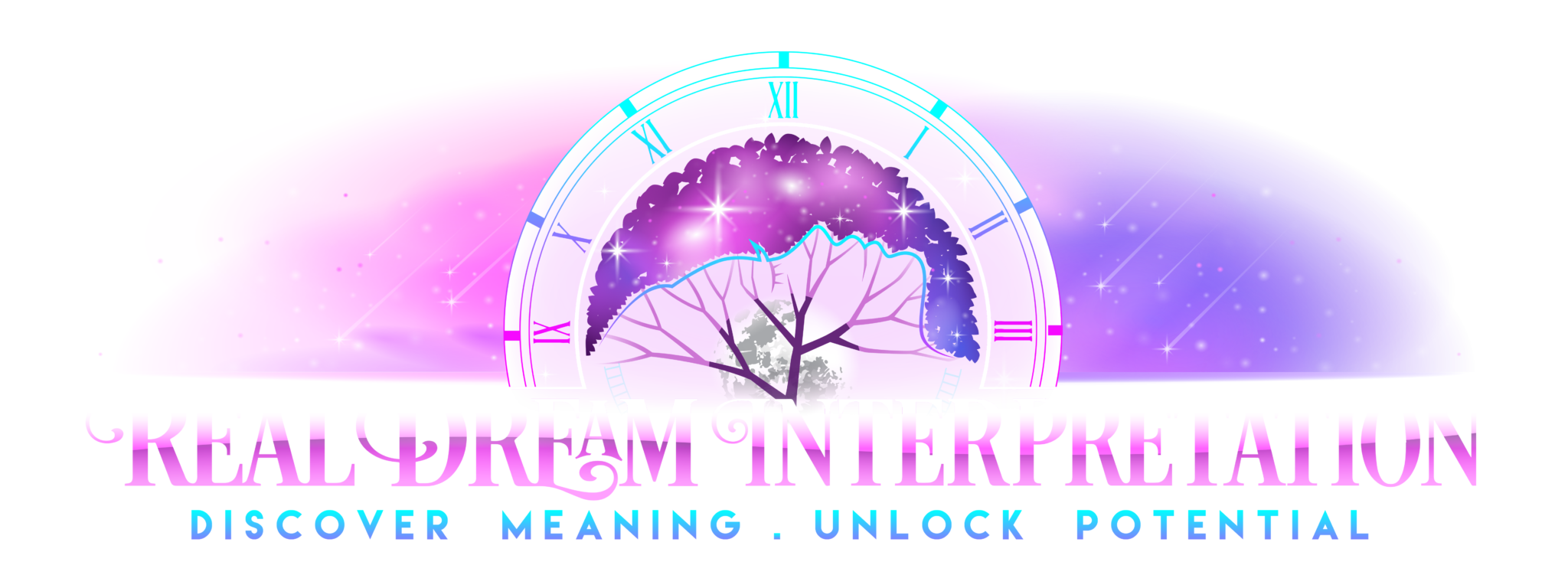
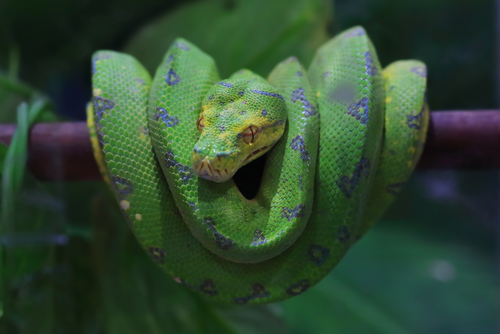
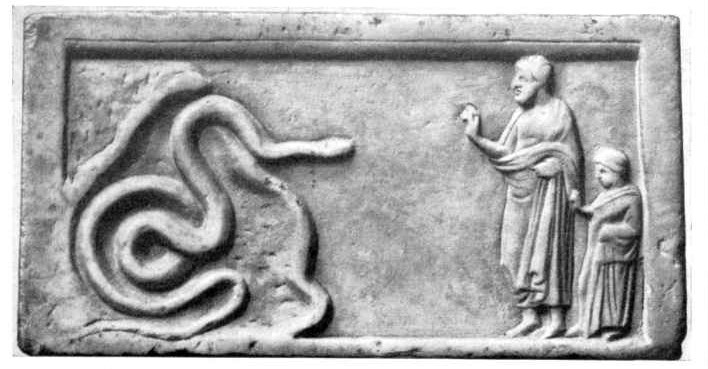

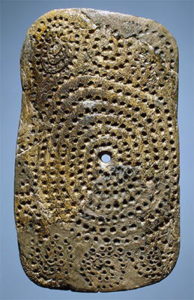






Thank you for pouring out so much energy into each and every article that you write. You are quite generous in sharing your knowledge and in communicating it using terminologies that can be easily digested. I am re-reading this in connection with my dream about a rat that looks like a snake when it opened its mouth. Too, I am reading the snake articles to help me decipher my dream about a black scorpion. May the Universe bless you for your devotion.
Brilliant article and clearly the result of extensive research
What an education this has been for me, researching the real meaning of the serpent in the Garden Myth. Thank you very much.
Brian
Many thanks for your comment! It’s a long read and I am very happy to hear that someone got it.